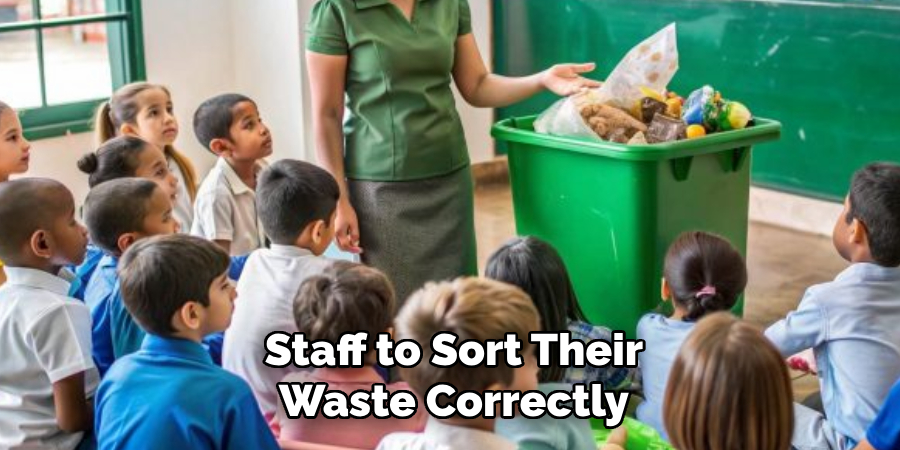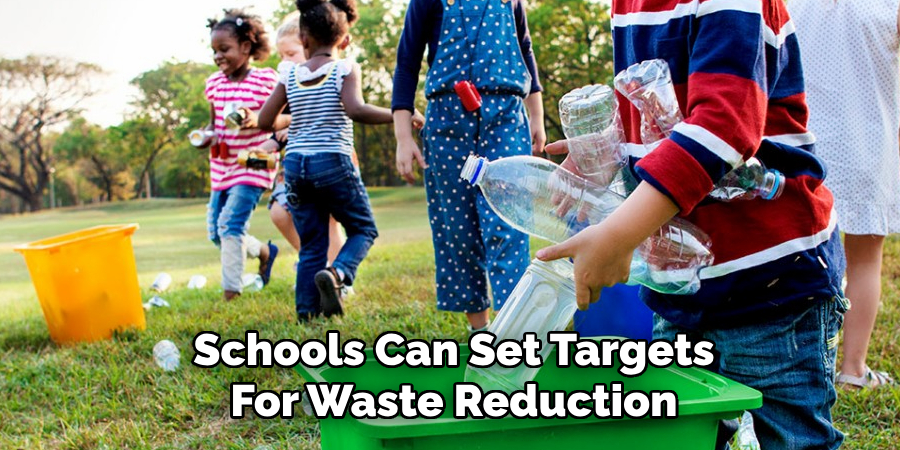Are you aware that schools are some of the most hazardous places for children? With the increasing number of environmental hazards present in and around schools, it is essential to take action to reduce these risks.

How to reduce environmental hazards in schools is essential for fostering learning and well-being. However, various environmental hazards, such as poor air quality, chemical exposure, and inadequate sanitation, can pose risks to students and staff. By identifying these potential dangers and implementing effective strategies, schools can mitigate their impact and create safer spaces for education.
From promoting sustainable practices to adopting regular maintenance and inspection routines, addressing environmental hazards requires a proactive and collaborative approach to ensure the safety and health of all individuals within the school community.
What Are the Causes of Environmental Hazards in Schools?
Environmental hazards in schools can stem from various sources, both internal and external. Some common causes include:
- Poor indoor air quality caused by mold, dust, and inadequate ventilation systems
- Chemical exposure from cleaning products, pesticides, and building materials
- Unsafe drinking water due to old pipes or contamination from nearby industries
- Inadequate sanitation facilities or improper waste disposal methods
In addition to these factors, natural disasters such as floods, earthquakes, and hurricanes can also contribute to school environmental hazards. School authorities must assess their surroundings and identify potential risks so that necessary measures can be taken.
10 Easy Steps on How to Reduce Environmental Hazards in Schools
Step 1. Conduct Regular Inspections

Regular inspections are a critical first step in identifying and mitigating environmental hazards within schools. These inspections should be thorough and conducted systematically across the entire school premises, including classrooms, bathrooms, kitchens, playgrounds, and storage areas. School authorities should check for any signs of mold, pests, or water leakage,
as these can negatively impact air quality and hygiene. Additionally, inspections should consider the condition of ventilation systems, plumbing, and electrical systems to ensure they function correctly and do not pose a safety risk. By maintaining a detailed record of these inspections and addressing issues promptly, schools can prevent minor problems from escalating into serious hazards that jeopardize the health and safety of students and staff. Scheduling periodic inspections throughout the year ensures that potential risks are monitored and mitigated effectively.
Step 2. Promote Sustainable Practices
Schools can take significant steps towards reducing environmental hazards by promoting sustainable practices. This includes adopting energy-efficient measures, such as switching to LED lighting and using renewable energy sources, which reduce the carbon footprint and save on utility costs.
Schools can also encourage students and staff to follow eco-friendly habits such as recycling, conserving water, and minimizing paper usage. By incorporating sustainability into their daily operations, schools can set an example for students and create a greener environment.
Step 3. Implement Proper Waste Management
Proper waste management is essential for maintaining a clean and safe school environment. This involves establishing clear procedures for waste segregation ensuring that recyclable materials, organic waste, and non-recyclable items are disposed of properly. Schools can provide labeled bins in accessible locations to encourage students and staff to sort their waste correctly.
Partnering with local waste management companies or recycling facilities can help ensure that collected recyclables are processed appropriately. Additionally, schools can educate students about the importance of reducing waste, reusing materials, and recycling through workshops and campaigns. By fostering a culture of responsibility and awareness about waste disposal, schools can significantly reduce environmental hazards and teach valuable lessons about sustainability to the next generation.

Step 4: Conduct a Waste Audit
The first step in implementing proper waste management in schools is to conduct a thorough waste audit. This process involves examining the types and quantities of waste generated within the school premises. By identifying significant sources of waste, schools can better understand their disposal patterns and highlight areas for improvement.
A waste audit may include categorizing trash into recyclable, compostable, and non-recyclable items and then analyzing the data to identify trends or opportunities for waste reduction. This step provides a foundation for creating an effective waste management strategy tailored to the school’s needs.
Step 5: Develop a Waste Management Plan
Once the waste audit is complete, the next step is to develop a comprehensive waste management plan. This plan should outline clear goals and actionable steps to reduce waste, increase recycling efforts, and promote sustainable practices within the school. Schools can set targets for waste reduction, such as minimizing single-use plastics or increasing the percentage of materials diverted to recycling and composting.
Educational initiatives, such as incorporating sustainability topics into the curriculum or hosting waste reduction challenges, can also be part of the plan. By involving students, staff, and the wider school community, the waste management plan becomes collaborative, ensuring long-term success and engagement.
Step 6: Keep the School Clean and Free from Clutter

A clean and well-maintained school promotes a healthy learning environment and prevents potential hazards. Regular cleaning schedules and protocols should be established to ensure that classrooms, hallways, bathrooms, and other common areas are tidy and clutter-free.
This includes maintaining proper ventilation systems, regularly checking for mold or pests, promptly addressing spills or leaks, and ensuring adequate waste disposal facilities are available. Schools can prevent accidents and maintain a safe environment for students and staff by promoting cleanliness within the school premises.
Step 7: Engage in Green Building Practices
Green building practices focus on designing and maintaining school facilities in environmentally sustainable ways. Schools can take various measures to reduce their environmental footprint, such as using energy-efficient lighting and appliances, installing solar panels, and incorporating natural lighting to decrease energy consumption. Water-saving technologies like low-flow faucets and rainwater harvesting systems can significantly reduce water usage.
Construction and renovation projects should prioritize eco-friendly materials that are non-toxic, durable, and sourced sustainably. By integrating green building features, schools reduce operational costs and teach students the value of environmental stewardship, reinforcing the importance of sustainability in everyday life.
Step 8: Foster Environmental Education Programs
Environmental education is a crucial element in promoting sustainability within schools. Students can develop a deeper understanding of environmental challenges and solutions by incorporating eco-focused topics into the curriculum, such as climate change, renewable energy, and biodiversity. Hands-on activities like tree planting, recycling drives, or creating school gardens allow students to participate actively in sustainability efforts.
Collaborations with local environmental organizations can enhance learning experiences through workshops, guest lectures, and outdoor excursions. Encouraging students to become environmental advocates instills lifelong values of responsibility and respect for the planet.
Step 9: Implement Energy-Efficient Practices
Schools can take significant steps toward sustainability by implementing energy-efficient practices. Simple measures like switching to LED lighting, installing motion sensors to reduce unnecessary energy usage, and maintaining HVAC systems can result in substantial energy savings.
Additionally, integrating renewable energy sources, such as solar panels or wind turbines, can reduce reliance on non-renewable energy while providing a practical example of sustainable technology and educating students and staff on responsible energy use, such as turning off lights and electronic devices when not in use, reinforces energy-conscious behaviors and contributes to a more sustainable school environment.

Step 10: Ensure Recycling
Recycling is a crucial aspect of promoting sustainability within schools. Establishing a robust recycling program helps minimize waste sent to landfills and encourages responsible consumption habits. Begin by providing clearly labeled recycling bins around key areas in the school, such as classrooms, cafeterias, and hallways, to ensure accessibility.
Educate students and staff on recyclable materials, distinguishing between paper, plastics, metals, and non-recyclable items to reduce contamination in recycling streams—partner with local recycling facilities to streamline waste collection and ensure proper processing. Additionally, schools can promote creativity and innovation by organizing projects that repurpose materials in art or science activities, fostering a culture of reusing resources.
By following these steps, schools can establish a framework for sustainability and promote responsible habits that benefit the environment and the wider community.
5 Things You Should Avoid
- Using Hazardous Cleaning Products: Avoid using cleaning agents that contain toxic chemicals, as they can harm both human health and the environment. Opt for eco-friendly and non-toxic alternatives to maintain cleanliness without introducing unnecessary risks.
- Improper Disposal of Waste: Do not dispose of hazardous materials, such as batteries, electronics, or chemical waste, in regular trash bins. Ensure proper disposal methods are followed by coordinating with specialized waste management services.
- Neglecting Proper Ventilation: Failing to maintain adequate ventilation systems in classrooms and other school spaces can lead to a buildup of indoor air pollutants, adversely affecting students’ and staff’s health.
- Over-reliance on Single-use Plastics: Avoid excessive use of single-use plastics, such as disposable utensils and packaging, as these contribute significantly to environmental pollution. Encourage the use of reusable items whenever possible.
- Ignoring Energy Inefficiencies: Overlooking energy inefficiencies, such as outdated lighting systems or leaving electronics on when not used, can result in unnecessary energy consumption and higher environmental impact. Implement energy-saving measures like LED lighting and power management practices.
Conclusion
How to reduce environmental hazards in schools requires a proactive and comprehensive approach that prioritizes health, sustainability, and education.
By fostering awareness among students and staff, implementing sustainable practices, and adhering to proper waste management and energy efficiency standards, schools can create a safer and more environmentally friendly environment. Encouraging reusable materials, maintaining adequate ventilation, and regularly assessing potential hazards are vital in minimizing environmental risks.
When schools take collective action toward sustainability, they safeguard the well-being of all occupants and set a positive example for future generations to prioritize environmental responsibility.

